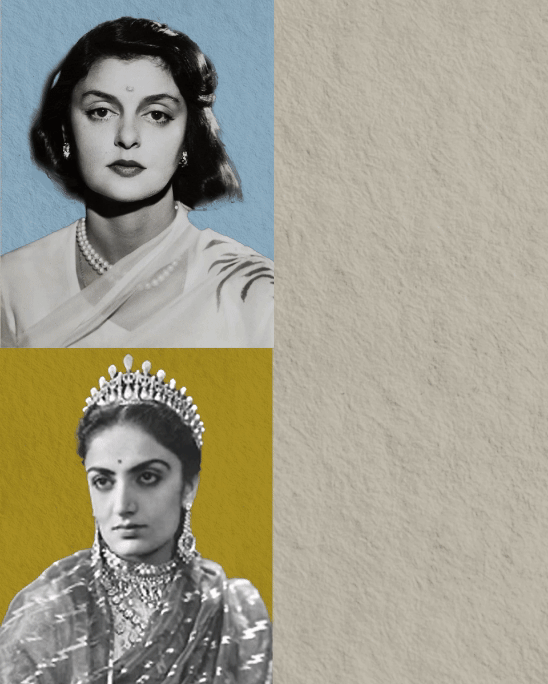Vintage Jewellery: The New Moderns
A renewed love of all things vintage is influencing contemporary jewellery creations, offering clients collectible pieces that seamlessly amalgamate the past with the present. Our international correspondent, Richa Goyal Sikri, demystifies the vintage world, and shines a light on notable examples from recent fine and high jewellery collections.
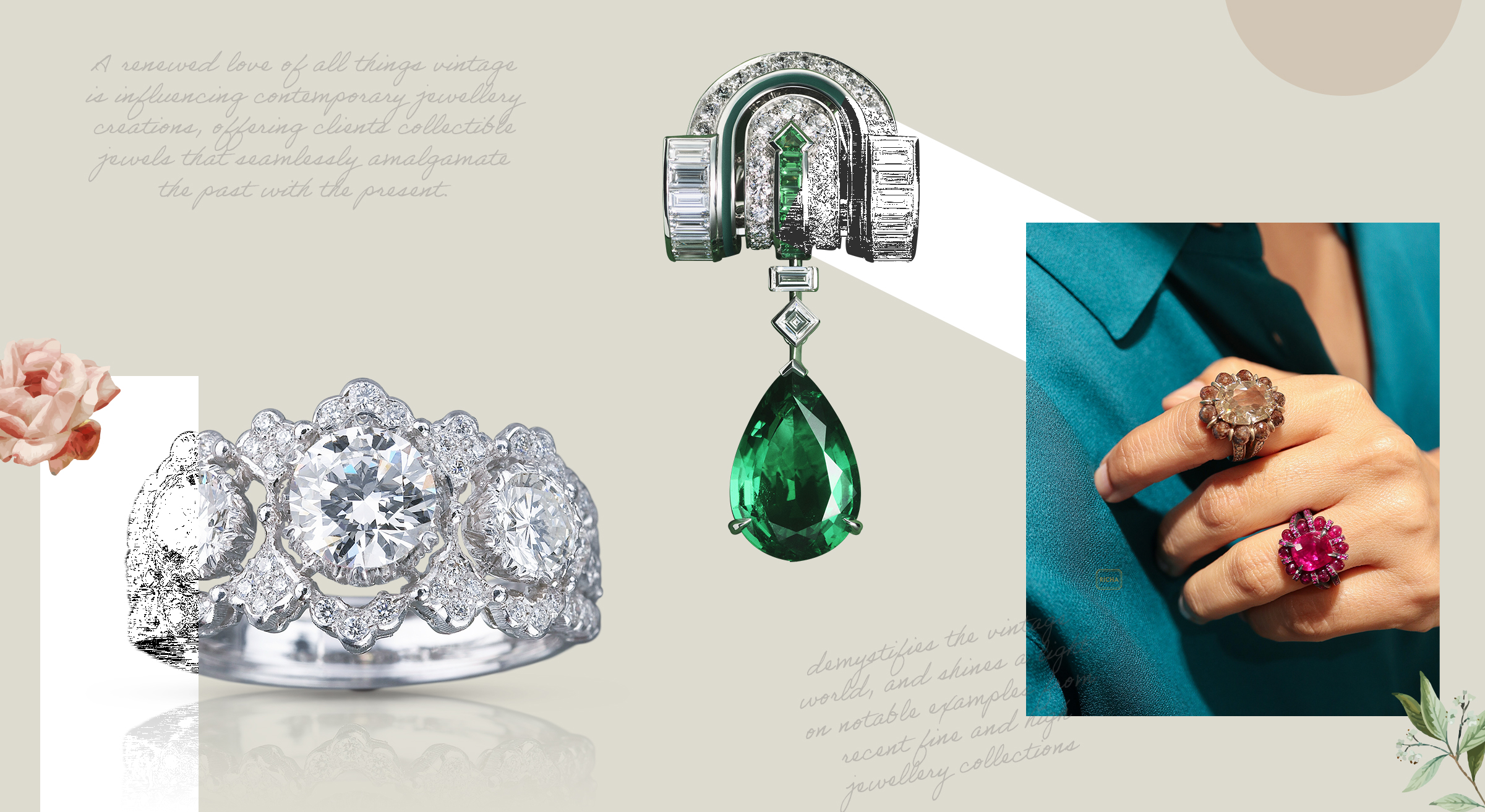
In the last three years, we’ve witnessed a magnification of prevalent trends. A notable one has been a desire for all things vintage. In a world healing from a global crisis (possibly headed towards another), nostalgia is a natural way of finding solace amidst growing uncertainty. This looking back isn’t just restricted to movies or music. We see the jewellery and fashion industry dip into their archives or channel a mood from the past. The rising cost of precious metals and stones, combined with the scarcity of skilled artisans, is also contributing towards an amplification of love for an old-world style.
Vintage is a term that has emerged in recent decades and is used by certain industry stakeholders to represent curated old jewels that exemplify high quality (design, technique, material). Some prefer the tag ‘antique’. Typically, antique is used to describe any jewel that’s over 100 years of age. Estate jewellery is commonly used in the USA. It denotes second hand jewellery that could be thirty, sixty or over a hundred years old but may or may not qualify as a collectible piece. In the east, a comparable term would be heirloom jewellery, which may be a spectacular piece or something commercial grade that’s unable to hold value over time.
In the market today, there are three obvious patterns to observe. First, an uptake in the purchase of antique jewellery. This could be via specialists or auction houses. Second, bespoke jewellery commissions that are transforming old family jewels into more wearable items of personal adornment. Third, design and creation of contemporary jewels that incorporate vintage sensibilities.
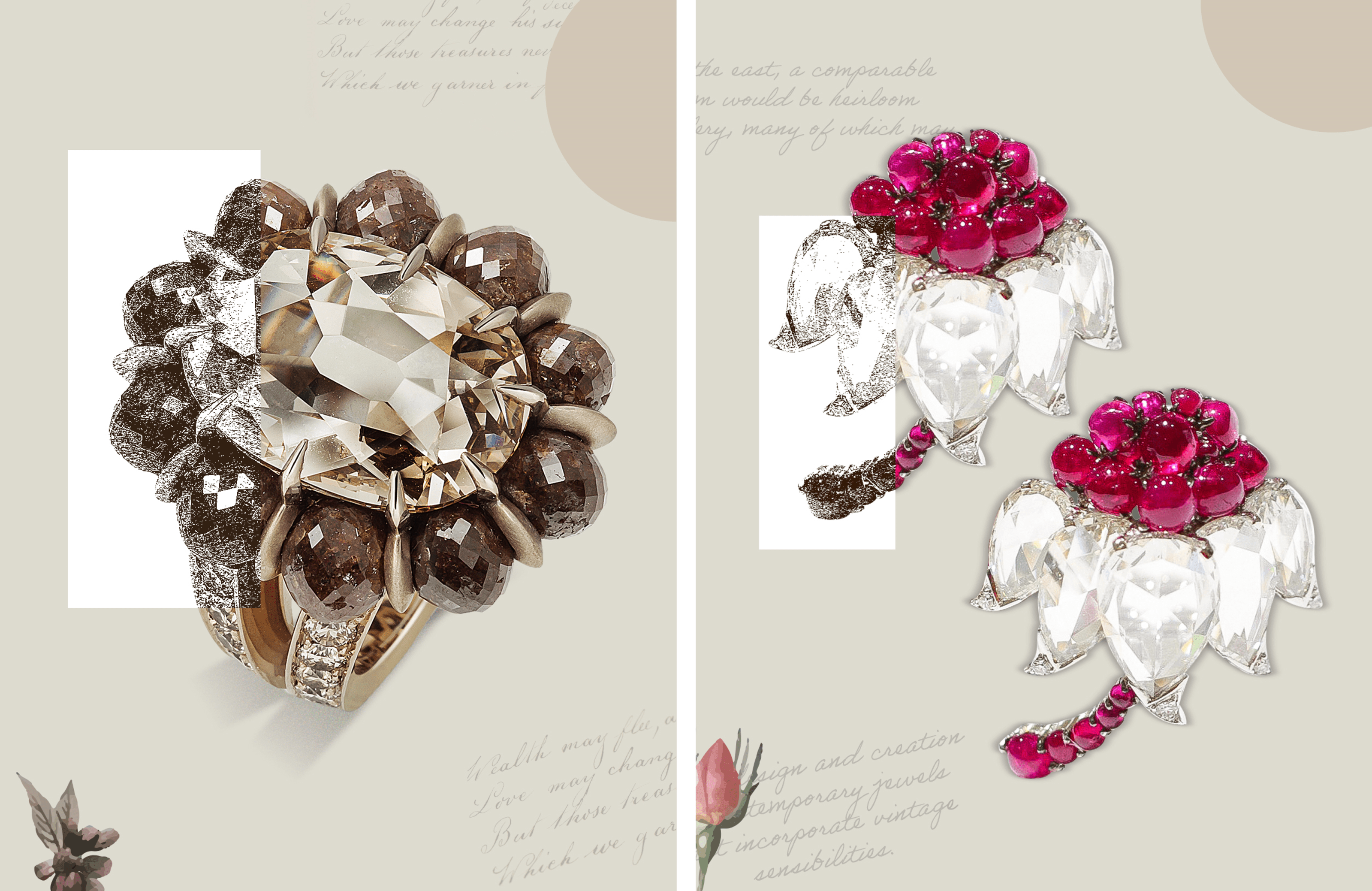
Jewellery historian, Dr Usha R. Balakrishnan, provides us with greater insights. “One of the biggest rediscoveries by modern jewellers is the beauty of natural flat diamonds, what in India was traditionally called vilandi, polki, and mukhlasi diamonds. These diamond slivers, which were rejected by the West, are now seeing a revival. I feel the person who led this movement was Viren Bhagat. The difference being that earlier diamond cutting was perhaps not as refined as it is now, where technological advances in the evaluation of rough and precision cutting are bringing out the fire and luminosity embedded in even a miniscule scrap of diamond.”
Many Mumbai-based jewellery designers, who either have their own ateliers or are working with diamond manufacturers in Surat, are using natural diamonds cut using old facet patterns for an ethereal lustre in their jewels. These collections offer a visual symphony of light, blending the limpid beauty of a natural diamond with a sparkle that’s ignited by modern faceting. Notable designers include VAK jewels by Vishal Kothari, Sajjante Jewels, and SAVAAB. Another jewellery house paying homage to iconic vintage eras is MOKSH. The brand recently launched a collection of fine diamond jewels capturing the geometric design sensibilities of the machine age, popularly known as Art Deco. “We used elements of this early 20th century style, such as baguette-cut diamonds, black onyx accents, and elongated forms, to evoke Art Deco without falling into the trap of a literal translation.”
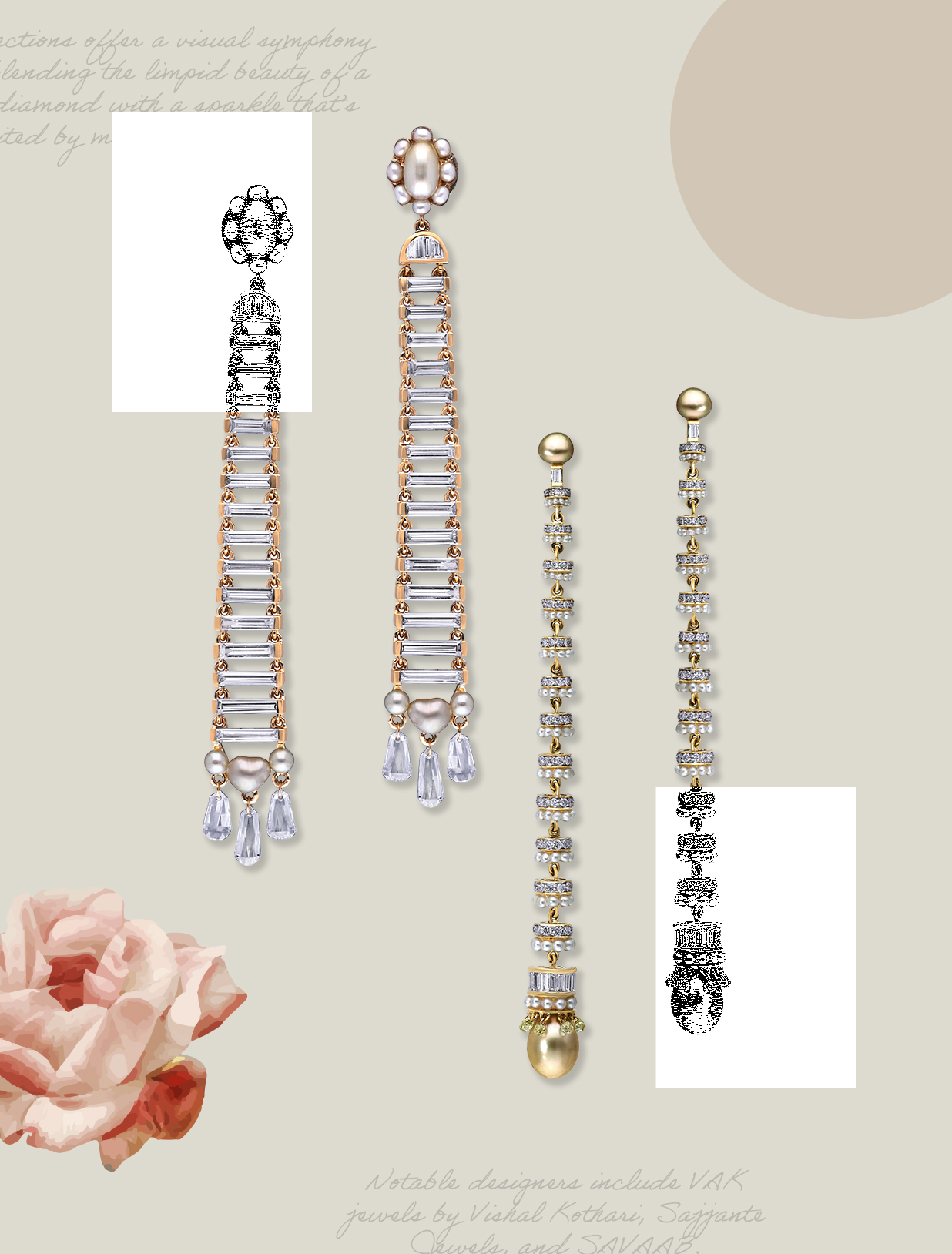
Coming back to design, the most interesting collections, fusing the past with the present, are from brands renowned for their heritage. Liisa Tallgren, Head of Design at Fabergé (re-launched in 2009 by Gemfields after a gap of 92 years), explains, “The past can be fascinating because it’s out of reach, mysterious, and can evoke nostalgia by referring to certain lifestyles. Jewellery reflects the time it was made and the people who made it. The Rococo collection is our contemporary take on the 18th century Rococo style. It celebrates Fabergé’s heritage, technical virtuosity, and artistry. These sculptural, bold jewellery pieces take inspiration from the gold scrolls featured on the legendary 18th century Rocaille Fabergé Egg.”

The Italian House of Buccellati recently launched a distinctive bridal collection called “Romanza”. Designed by the father-daughter duo of Andrea and Lucrezia Buccellati, the collection is composed of rings, which exude the lightness and magic of Buccellati’s signature tulle technique. Romanza offers brides an alternative to the standard wedding band where, interestingly, a modern aesthetic is being refreshed by incorporating archaic techniques. “The connection between the past and the present in Buccellati creations is because of traditional craftsmanship, like the engraving techniques, which are still used, and date back to the goldsmith ateliers of the Italian Renaissance.” Andrea Buccellati.
In 1944, Princess Elizabeth received a Boucheron aquamarine and diamond double clip brooch for her eighteenth birthday. She would continue to wear this sentimental design throughout her reign. In 2020, Claire Choisne, Creative Director of Boucheron, created a High Jewellery collection reinterpreting the famous Art Deco design through eighteen contemporary new designs. Histoire de Style, Like a Queen, draws inspiration from an icon whose style transcended decades. In the great High Jewelry tradition, the Frosty White necklace in white gold, diamonds and rock crystal offers six different configurations. The piece is set with more than a thousand natural diamonds and flanked by two recognisable clips which may be detached and worn as a single or double brooch. The draped lower portion of the necklace, composed of four radiant diamond strands, is also independent. It may metamorphose into a jacket adornment or cape clasp.
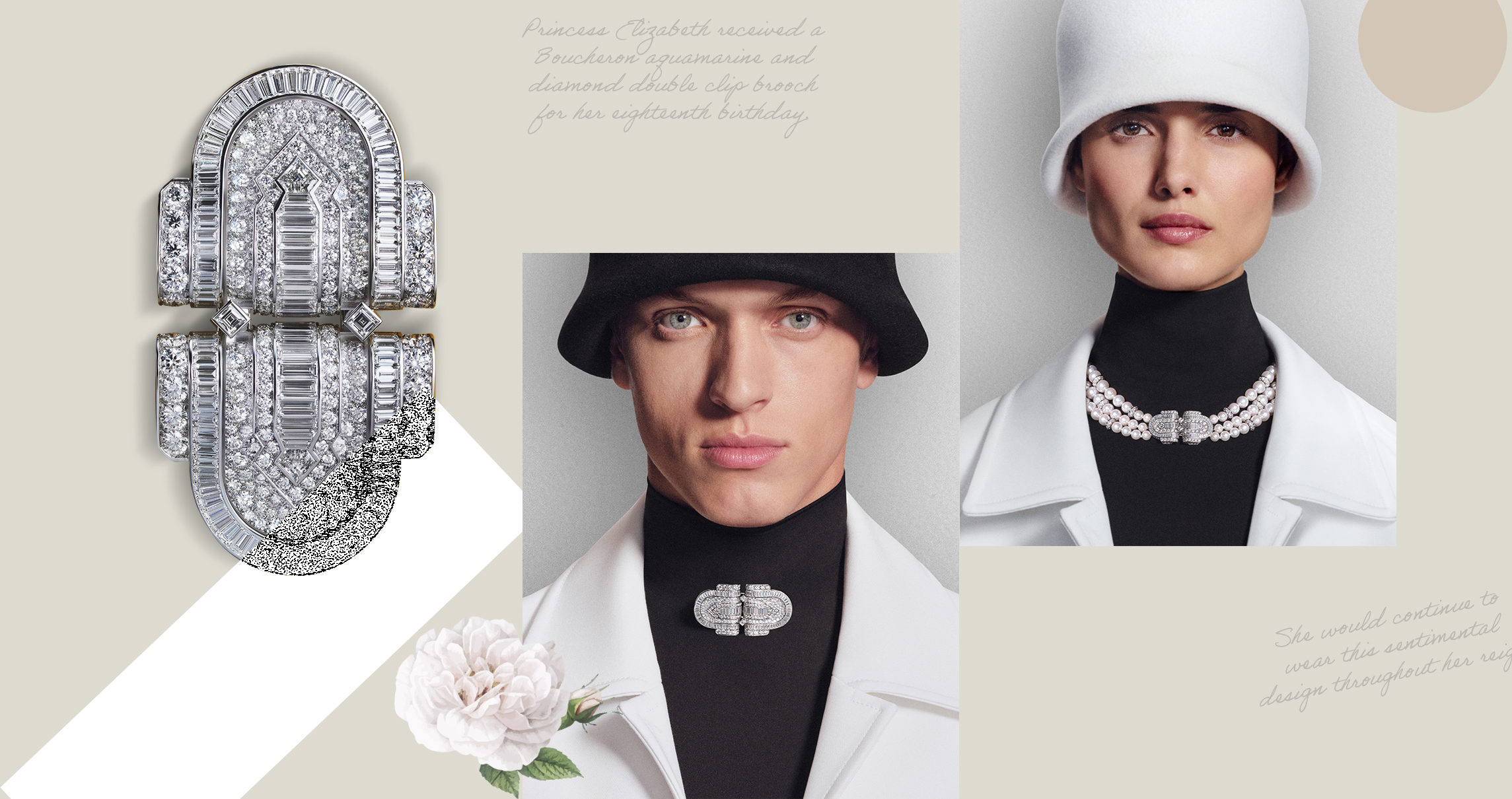
Considering the above new collections, and others of a similar beat, it’s evident that the fusion of historic moments and motifs with modern sensibilities is here to stay. Designers and their patrons are open to experimentation, and instead of breaking from the past, are embracing it to write a new bejewelled language of personal adornment.
